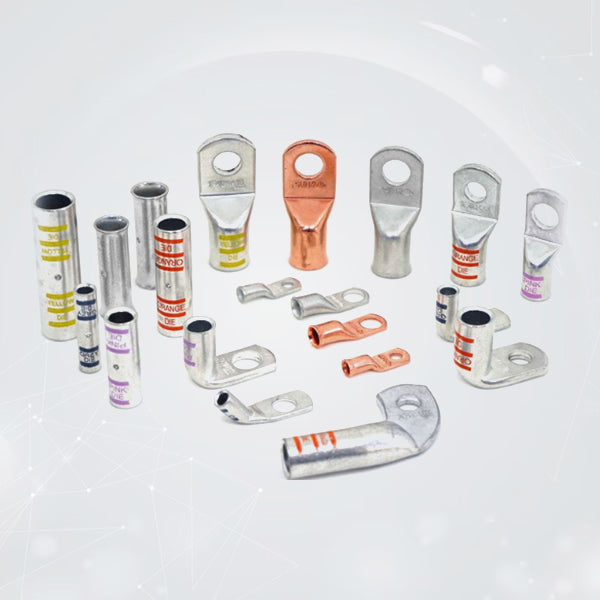
Demystifying Battery Cable Choices: A Comparative Analysis of Various Cables and their Compatibility with Battery Cable Lugs
Choosing the right cable for your electrical connections is crucial for ensuring optimal performance and longevity. In this blog, we'll take a closer look at five distinct types of cables—S.A.E battery cable, Class K Welding Cable, UL 1426 marine boat cable, Car Audio Cable, and the often-debated CCA (Copper-Clad Aluminum) & OFC (Oxygen-Free Copper) Cables. We'll explore their individual characteristics, applications, and how they pair with battery cable lugs.
1. S.A.E Battery Cable
Society of Automotive Engineers (S.A.E) battery cables are a standard choice for automotive applications. Known for their durability and reliability, these cables are designed to withstand the demanding conditions of vehicle use. When matched with appropriate battery cable lugs, S.A.E battery cables ensure a secure and efficient power transfer in automotive and marine settings. These cables conform to SAE J1127/1128 and SAEJ378C standards for battery cables. SELTERM lugs are sized to fit SAE battery cables.
2. Class K Welding Cable
Class K Welding Cables are recognized for their flexibility and durability, making them suitable for heavy-duty applications like welding. These cables are constructed with a high strand count, enhancing their flexibility and maneuverability. When combined with SELTERM’s tinned copper lugs designed for flexibility, Class K Welding Cables become an excellent choice for applications requiring reliable power in challenging environments.
3. UL 1426 Marine Boat Cable
UL 1426 Marine Boat Cables are specifically engineered to meet the rigorous demands of marine environments. These cables often feature tinned copper conductors for enhanced corrosion resistance. Paired with corrosion-resistant battery cable lugs, UL 1426 cables are ideal for marine applications where exposure to moisture, saltwater, and harsh weather conditions is common. Apart from the 4/0 AWG marine cable, all other SELTERM battery cable lugs are a direct match to the UL1426 marine boat cables. For the 4/0 AWG cable size, we recommend using the 4/0 AWG (XL) range of SELTERM battery cable lugs for an optimal fit.
4. Car Audio Cable
Car Audio Cables are tailored for high-fidelity audio applications in automotive settings. These cables prioritize signal quality and noise reduction. When used with car audio lugs suitable for audio applications, such as those found in car audio systems, they deliver clear and distortion-free audio signals. It is important to note that car audio cables can sometimes come in non-standard strand sizes. We at SELTERM always recommend customers use SELTERM ring terminals for car audio projects to measure the conduct diameter of the wire being used before making a purchase of our terminals.
5. CCA & OFC Cables
Copper-Clad Aluminum (CCA) and Oxygen-Free Copper (OFC) cables are often discussed in the context of conductivity and cost. CCA cables consist of an aluminum core coated with a thin layer of copper, offering a more affordable option. However, OFC cables, with their pure copper construction, provide superior conductivity. When paired with high-quality battery cable lugs, both CCA and OFC cables can be used effectively, with the choice depending on the application's requirements and budget constraints. CCA & OFC cables similar to car audio cables can sometimes also come in non-standard strand sizes. Hence it is recommended to measure the conduct diameter of the wire being used before making a purchase of SELTERM terminals.
Conclusion
Selecting the right cable for your electrical connections involves considering factors such as flexibility, durability, corrosion resistance, and conductivity. Pairing these cables with suitable ring terminals is crucial for establishing a reliable and secure power transfer. Whether you're working on automotive projects, marine applications, welding tasks, or audio installations, understanding the characteristics of each cable type will empower you to make informed decisions and achieve optimal results in your electrical endeavors.

